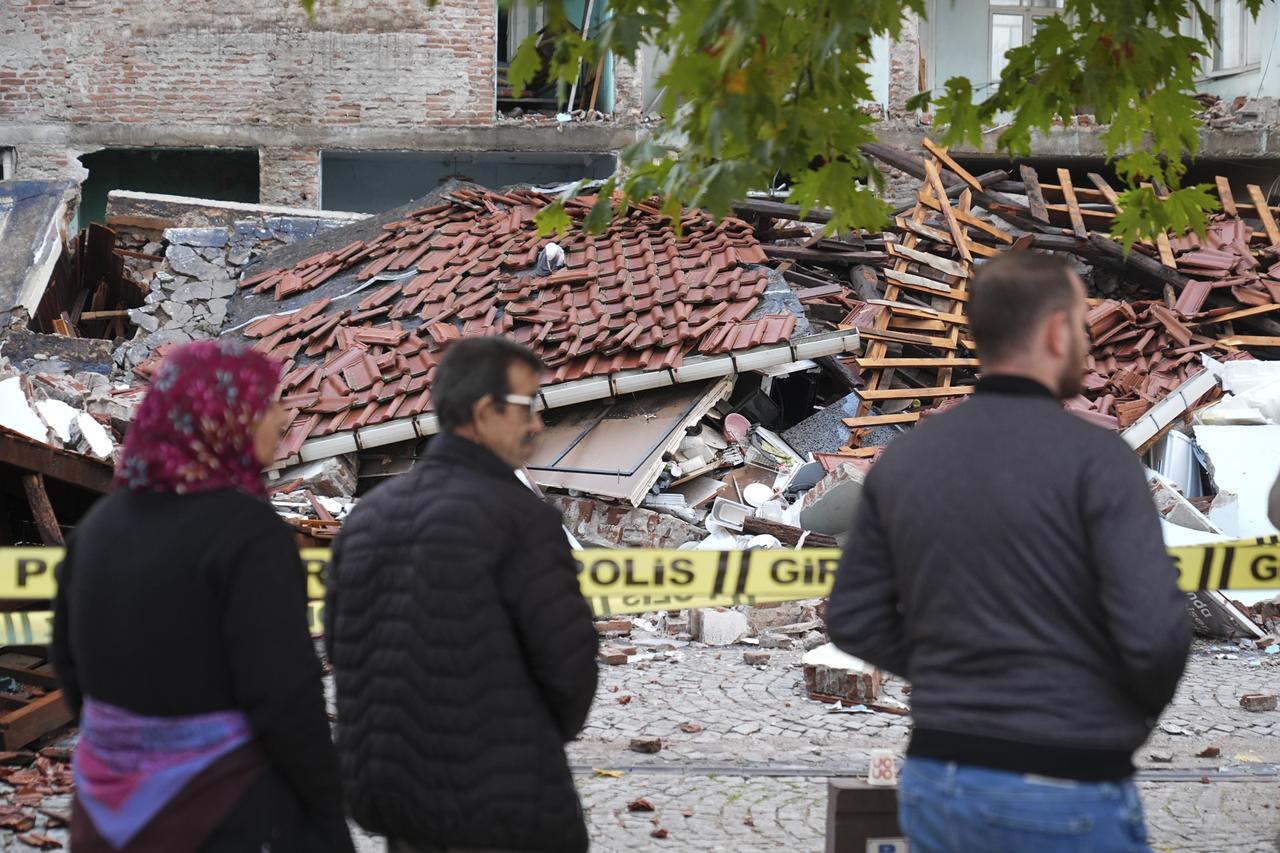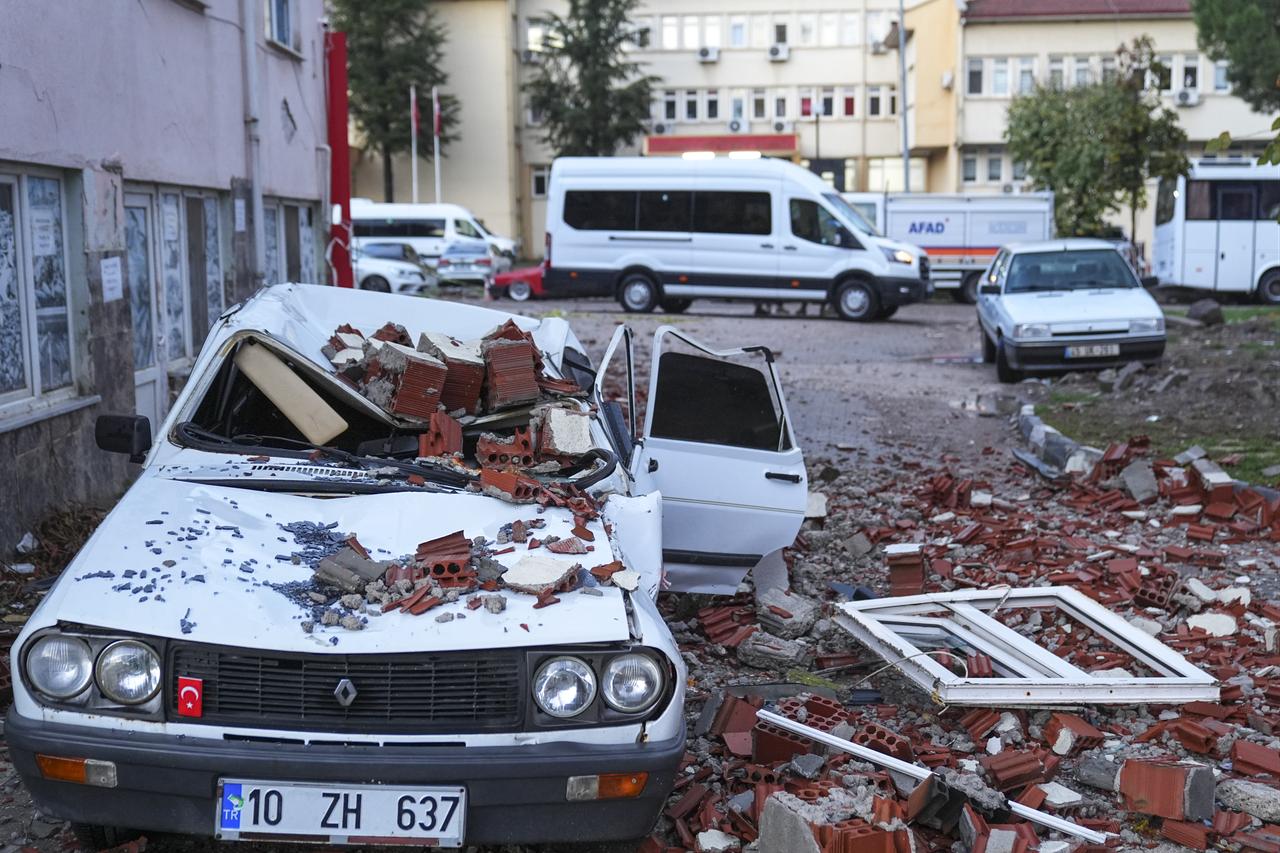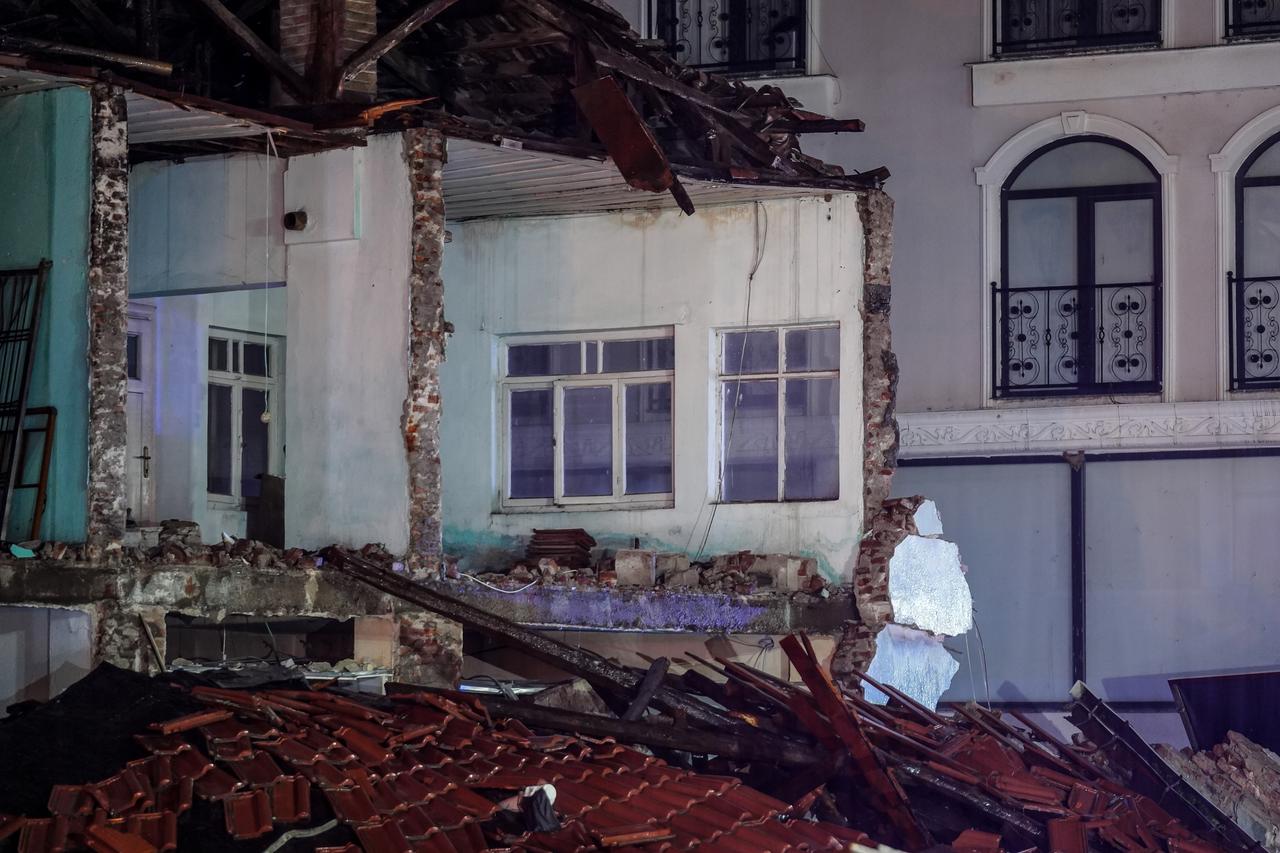
A powerful 6.1-magnitude earthquake struck near the Sindirgi district of Balikesir late Monday night, shaking large parts of western Türkiye, including Istanbul, Izmir, Bursa, Kocaeli and Canakkale.
According to the Disaster and Emergency Management Authority (AFAD), the earthquake occurred at 10:48 p.m. local time at a depth of approximately 5.99 kilometers.
Interior Minister Ali Yerlikaya confirmed that no deaths were reported as of early Tuesday. A total of 19 people were injured, primarily due to panic-related falls or jumping from buildings.
Four structures—three residential buildings and one shop—collapsed, but officials stated that all had been previously condemned following an earthquake in August and were not in use. Two individuals were treated for minor injuries related to panic.

Balikesir Governor’s Office announced that all schools across the province would remain closed on Tuesday for safety inspections. Public institutions were instructed to consider pregnant and disabled personnel on leave for the day.
The Information and Communication Technologies Authority (BTK) reported a brief surge in mobile traffic after the quake but confirmed there were no disruptions to telecommunications services. AFAD teams were deployed overnight to assess damage in rural areas and monitor aftershocks, some exceeding magnitude 4.
Geologist Professor Okan Tuysuz described the earthquake’s energy release as “comparable to the Nagasaki atomic bomb,” warning residents to stay away from damaged buildings. He noted that the Sindirgi region has experienced over 12,000 tremors since Aug. 10 and that seismic activity is likely to continue.
Professor Naci Gorur, another member of Türkiye’s Science Academy, said the event was part of ongoing fault activity in the Gordes–Demirci–Selendi–Usak graben system and would not trigger a Marmara earthquake.

Professor Sener Usumezsoy stated that the quake occurred in the mountainous areas near Sindirgi and posed no direct risk to the Marmara fault line. Professor Suha Ozden of Canakkale 18 Mart University added that while the frequency of earthquakes in western Anatolia has increased, the distribution of energy across two separate events (6.2 and 6.1) could be “relatively favorable.”
The Sindirgi earthquake follows a 6.2-magnitude quake in August 2025, which resulted in one death and 29 injuries.
Officials said damage assessment and structural inspections would continue throughout the week as aftershocks persist.